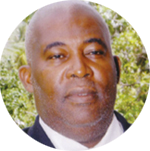
WELCOME students to another lesson in the Open School for the first term of the academic or school year 2023 to 2024. The school is open to parents, guardians, teachers, students and members of the public. It is my hope that these stake-holders in education will acquire knowledge and skills on a better strategy on the teaching of grammar.
At the end of the lesson, students, teachers, parents and guardians should be able to (1), explain what you understand by Grammar (2) Name one aspect of the Literacy Hour as clearly stated in this piece.
When I attended Primary School some six decades ago, grammar was a subject on the time-table. And the teachers taught the subject in the way that they thought best at the time.
Indeed, the approach at the time was for the teacher to write a patch or group of jumbled words and the students were required to put these words in columns which the teacher has drawn on the board headed nouns, verbs, adjectives etc.
Now grammar is a powerful tool for reading and writing. Then what is grammar? A simple definition of grammar is a set of rules of a language governing the sounds, words, sentences and other elements, as well as their combination.
Another simpler meaning of grammar is a set of rules that dictates how a language works, making it easy to comprehend. Without proper grammar, one would have no idea how to speak or write in English.
Now, why should grammar be taught? Grammar gives the students the words which they need to discuss reading and writing; it gives students more control over their writing; it helps students write more accurately; it helps students understand that punctuation can indicate how writers want their writing to be read; it helps students write appropriately, powerfully and accurately; it helps students to spot their errors and provides strategies for improving their work; it cuts down on bad language when students are on the playground; it helps students build their vocabularies, among several others.
Now students need to know and understand how to apply their knowledge of grammar directly in their own reading and writing.
Indeed, this could be done through Shared and Guided Reading which has become a very popular strategy of the Literacy Hour.
That strategy was introduced in St. Lucia by the Ministry of Education some twenty years ago, and it is hoped that schools in St. Lucia are using the Strategy to teach English Grammar.
I wish to emphasize that Shared and Guided Reading and Writing is a key strategy within the Literacy Hour.
The Roseau Combined School was one of the pilot schools when the strategy was being piloted in St. Lucia. The strategy assisted the boys who were usually slower than the girls, to improve their performance.
Now what is the teaching model that I am proposing? Share Reading: Teacher and children read, identifying specific use of grammar and punctuation, discussing and interpreting. Shared Reading is best taught with teacher putting students in a horse-shoe formation with a pictorial story which would allow teacher and students to read and interact easily for one hour.
In shared Writing, teacher demonstrates or scribes, that is, she records all decisions, actions and issues by the group during the Shared Reading, challenging students to use grammatical features efficiently and accurately.
This stage would be followed by investigation or instruction to reinforce activities. This is where the mechanics of the Literacy Hour comes in.
The first part of the model or strategy is the Word Level work. This is the point at which the teacher teaches plurals; gender words such as actor, actress; waiter and waitress or server, which is neutral gender; collective nouns such as assembly, family, crew; antonyms and synonyms; adjectives and adverbs, and so on.
In the Literacy Hour that follows, the teacher should teach the Sentence Level Work. He or she would begin students to the realization of when capital letters are used; the different functions of dialogue; figures of speech, sayings, idioms such as apostrophe, pun, irony, simile, proverbs and so on; connectives such as However, Nonetheless, In addition, Therefore, similarly.
In my own, personal writing, I use the words Indeed and Now, to connect a previous paragraph with a current one. Jokes, puns, metaphors and similes, ways to open and end a story, are all sentence Level work.
Transformations are a part of Sentence Level Work. For example, changing sentences from positive to negative, past to present, reducing complex sentences to a simple one. Time and space do not allow me to highlight other components of Sentence level Work.
Now, the stages which follow Shared Reading and Writing are Guided Reading and Guided Writing; Independent Reading and Independent Writing; and Feedback which will be dealt with in a subsequent lesson.
It would be instructive to follow carefully the Grammar Teaching Model which shows the progression from reading to writing. Many other activities will involve considering the effect of punctuation or grammar on reading.
Now two quizzes for you: (1) In your own words, explain what you understand by Grammar (2) Name one aspect of the Literacy Hour as clearly stated in this article.











